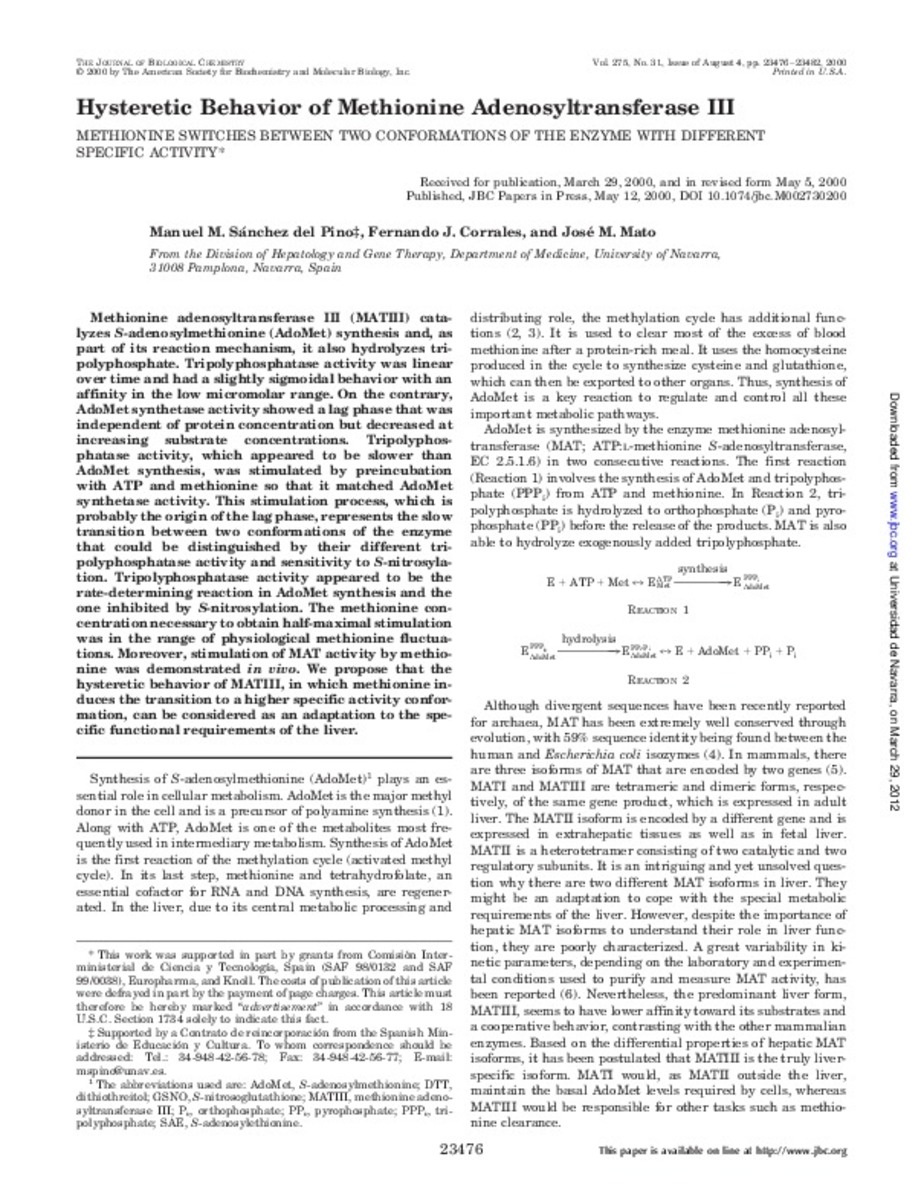Hysteretic behavior of methionine adenosyltransferase III. Methionine switches between two conformations of the enzyme with different specific activity
Keywords:
Liver/enzymology
Methionine/metabolism
Methionine Adenosyltransferase/metabolism
S-Adenosylmethionine/biosynthesis
Publisher:
American Society for Biochemistry and Molecular Biology
Citation:
del Pino MM, Corrales FJ, Mato JM. Hysteretic behavior of methionine adenosyltransferase III. Methionine switches between two conformations of the enzyme with different specific activity. J Biol Chem 2000 Aug 4;275(31):23476-23482.
Statistics and impact
0 citas en

0 citas en

Items in Dadun are protected by copyright, with all rights reserved, unless otherwise indicated.







